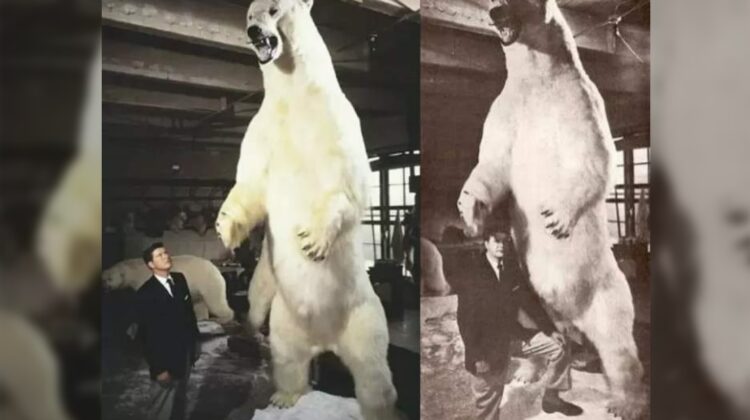
Polar bears, the majestic denizens of the Arctic, are among the most fascinating creatures that roam our planet. These remarkable giants stand out for numerous reasons, from their incredible size to their crucial role in the Arctic ecosystem.
Without a doubt, polar bears are the largest bears on Earth. These Arctic giants can weigh up to a staggering 1,500 pounds, and their immense stature sees them reach nearly 10 feet tall when standing on their hind legs. The largest polar bear ever recorded was a male shot at Kotzebue Sound in Alaska in 1960, which, when mounted, towered at an impressive 3.39 meters on its hind legs and weighed a formidable 1,002 kilograms (2,209 pounds).

Their impressive size isn’t merely for show; it’s a vital adaptation to survive the harsh Arctic environment. These bears need to conserve heat and store energy to endure the extreme cold. Their large size and thick layer of fat provide the insulation required to thrive in such an unforgiving habitat.
Polar bears are inherently solitary animals, typically coming together only for the purpose of mating. The female polar bear gives birth to a litter of up to three cubs, which remain under her care for approximately two years before venturing out on their own into the Arctic wilderness.

Beyond their sheer size and impressive adaptation to cold climates, polar bears play a crucial role in the Arctic ecosystem. They help regulate the population of seals and other marine mammals, acting as apex predators. These mighty bears also serve as a vital food source for other Arctic predators, such as wolves and orcas.
However, polar bears face a daunting threat due to climate change and habitat loss. As the Arctic ice recedes, their natural habitat dwindles, and their access to food sources becomes more challenging. Pollution and hunting add to the myriad challenges that polar bears endure.

In this critical juncture, it’s imperative that we all play a part in safeguarding these magnificent creatures and their Arctic habitat. Mitigating climate change by reducing our carbon footprint is an effective way to support their survival. Additionally, supporting organizations dedicated to the protection of polar bears and their fragile ecosystem can make a meaningful difference. In the face of these grave challenges, our collective efforts can ensure that these extraordinary giants continue to roam the frozen expanse of the Arctic for generations to come.

Leave a Reply